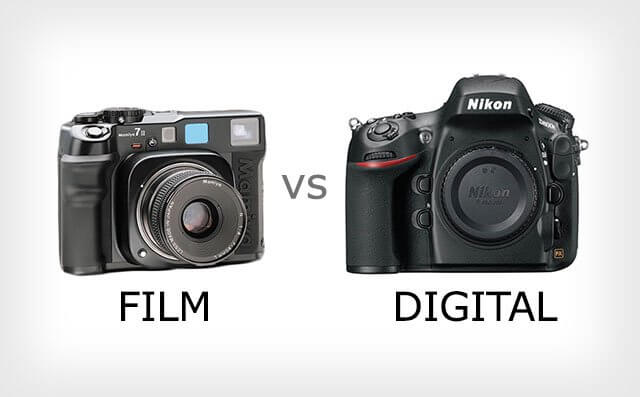In this day and age where almost everything is done digitally, you can be sure that a lot of traditional practices are abandoned if not already considered obsolete. However, in the world of photography, the opposite can be said to be true. Although digital photography has literally taken the world by storm, a number of photographers will pass the opportunity to use a digital camera for its film counterpart any day. It all boils down to the needs, wants and preferences of the individual photographer. With this said and done, let’s take a closer look at which is better; film or digital?
-
Resolution
The main aim of any photographer, whether novice or pro, is to get a sharp image with high resolution. Modern digital cameras are perfectly suited with high-resolution capabilities hence the cheapest digital camera can offer high-resolution pictures. However, with film cameras, you need to look closely and keenly to land a medium or (if possible) a large format. These can give you resolutions of up to 400 MP which when scanned can translate to a whopping 80 MP as compared to most entry digital cameras’ 24MP.
-
Film Grain
Otherwise referred to as digital noise in digital cameras, it is basically the small textures that you notice in a photograph randomly appearing. When using film, some chemical particles do not receive enough light, this in turn results to the film grain. On the other hand, digital cameras have image sensors that experience the digital noise from unwanted signals, which is normally caused by excess heat. To counter these, you need a high-speed film and increasing a digital camera’s ISO.
All in all, with a medium film, you can capture photographs of long exposure. However, for digital cameras to avoid the overall thermal noise, it has to be operated at very low temperatures. This can cause some level of operational difficulty with digital cameras when used for prolonged periods because it may start overheating. On the other hand, a film does not have any particular issue with overheating whatsoever.
-
Speed
Digital cameras are perfect for low light photography and they also have the advantage of changing speeds for different photographs. However, for film, the speed is always constant throughout the roll. With large format film cameras that use an individual sheet at a time, the ISO can be switched between different shots.
Conclusion
To choose between digital and film requires an individual’s decision. All you need is to know the advantages and disadvantages of both options and decide which one to settle for.


